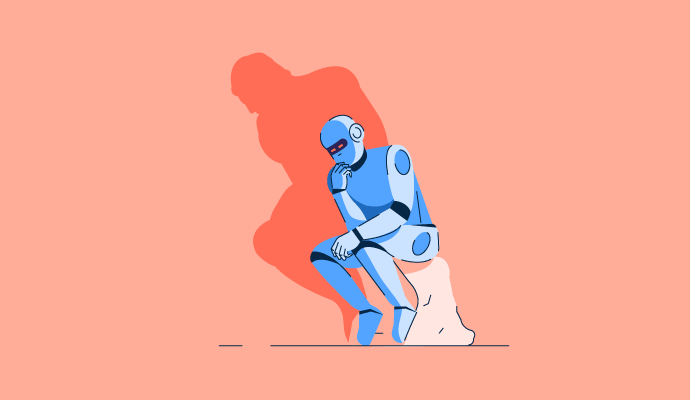Table of Contents
Studio Ghibli, the iconic Japanese animation house behind gems like Spirited Away, and My Neighbor Totoro, has always stood for hand-drawn magic and deep, emotional storytelling.
When Ghibli-style art began surfacing via ChatGPT’s Studio Ghibli art, the reactions were as vivid as the art itself. While some marveled at these AI-created scenes’ nostalgia and beauty, others felt unease: was this a homage or hollow mimicry?
What is ChatGPT’s ‘Studio Ghibli’, and why is the internet obsessed?
ChatGPT’s ‘Studio Ghibli’ refers to a popular custom GPT model that generates text or images in the style of Studio Ghibli’s iconic animation. The internet is obsessed with it because it blends nostalgia, storytelling, and visual whimsy, offering users a creative way to explore Ghibli-inspired fantasy.
But these creations raise big questions: Who owns a style? And when does inspiration become appropriation?
Ghibli, AI, and the soul of animation: Miyazaki’s stance
The philosophical heart of the current Ghibli-AI debate can be traced back to 2016 when Hayao Miyazaki delivered what is now one of the most quoted critiques of AI-generated art.
During an NHK documentary on Studio Ghibli, Miyazaki was shown an experimental animation created by an artificial intelligence research team. The animation depicted a grotesque, limping creature designed to move in ways that simulated neurological trauma.
Miyazaki was visibly disturbed. After a long pause, he responded not with a technical critique but with a deeply human one:
“I strongly feel that this is an insult to life itself.”
Hayao Miyazaki
He added, “I would never incorporate this technology into my work.” The quote resurfaced when ChatGPT’s image tools launched in late 2022 and has returned to prominence amid recent viral Ghibli-style art.
Source: X
Miyazaki’s rejection wasn’t about technology per se. It was about a lack of empathy in the work and the absence of lived experience behind the image.
Imitation, innovation, or IP grey area? What experts are saying
As AI-generated Ghibli-style art continues to flood social feeds, many researchers and thinkers are stepping in with hard questions. And while the legal debate tends to focus on whether AI is “stealing” anything, the deeper conversation is more nuanced: What does it mean to create? Who gets credit, and who gets left behind?
Kaat Scheerlinck, lead lawyer, and Alexis Fierens, IP and commercial partner at DLA Piper, a global law firm, suggest that users who provide detailed prompts and actively guide the AI’s output could be considered authors due to their significant creative involvement. The crucial element is how much the human contributes to guiding and shaping the final output.
Conversely, developers of AI tools, despite holding intellectual property rights in the software, typically lack the creative control over individual outputs necessary to claim authorship.
The original rights holder may have a valid claim if an AI tool generates content based on copyrighted material, whether user-uploaded or scraped. However, leading platforms like ChatGPT and Microsoft Copilot prohibit users from inputting third-party copyrighted content without permission. These restrictions complicate the enforcement of copyright claims over AI-generated outputs.
Luiza Jarovsky, co-founder of the AI, Tech & Privacy Academy, wrote in a recent LinkedIn post:
“From a legal perspective, reproducing the style does not necessarily infringe copyright. However, if the AI system can accurately copy a particular style, it means that it was trained using the original work (often copyrighted).”
Luiza Jarovsky
Co-founder of the AI, Tech & Privacy Academy
She also added that whether training AI on copyrighted material qualifies as fair use and under what conditions is still under legal debate and litigation in many parts of the world, including the U.S.
Luiza thinks this viral trend is a decisive moment in the AI copyright debate because:
- The new AI image generator can mimic artistic styles with striking precision and generate multiple consistent scenes in that same style, leading many creators to realize their copyrighted works were likely used to train OpenAI’s models.
- Artists may feel deeply frustrated that this tool can produce near-replicas of their work in seconds, modified just enough to avoid infringing copyright, undermining the effort that went into the original creation.
AI and artistic ownership: Technologists weigh in
AI researcher and author Andriy Burkov didn’t hold back:
“This is probably the largest identity theft in the entire history of art. There’s no doubt that OpenAI purposely used frames of Studio Ghibli animations to train their image generation model.”
He went on to accuse the tech ecosystem of robbing artists of decades of work, labeling it “outrageous” and calling for accountability akin to how hackers were once blacklisted from using computers.
In response to Burkov’s post, others echoed similar sentiments.
Chief Technology Officer at Vera Richard Davies weighed in from a legal perspective. Using his own brother — an artist whose style was replicated by LMMs without consent — as an example, he warned:
“If this were accepted for all, what kind of society would we have? I propose it would lead to disorder, lawlessness, and decay.”
However, not all voices were entirely negative. Some, like Charles Drake, a developer, proposed a constructive solution:
“Imagine just $1 given to the artist every time a prompt refers to them: ‘in the style of ___’. I’m sure lots of artists would be grateful for such an opportunity.”
He suggests a licensing model in which artists could package their styles for ethical reuse — much like fonts or stock music. This vision frames AI as a new sector for creators, not a threat.
Charles’s optimism was met with a more grounded take. Nathan Douglas noted, “It’s just another form of streaming intellectual property”—not purely as a critique, but as a lens for understanding. He argued that if we treat style as a kind of intellectual property, it could help us navigate these emerging challenges, much like we’ve done (imperfectly) with music, video, and ebooks. Still, he cautioned, “We need to calmly, generously, and earnestly change how we support and reward creative work,” citing examples of how current IP systems—like Hollywood accounting and royalty exploitation—have often failed artists.
Charles agreed —acknowledging that unless users add significant originality, the end result is effectively a repackaging of someone else’s art.
This debate shows a key tension: whether AI-enhanced creation is truly transformative — or simply theft dressed as technology.
Can AI capture the soul of art?
AI’s ability to generate visual inspiration in seconds is unprecedented. Designers can use it for rapid ideation, moodboarding, or even testing variations on themes. In that sense, it can act as a creative companion, accelerating workflows and sparking new directions.
But as Carl Hendy noted in a touching LinkedIn post, AI might replicate visual style — but not the emotion or intent behind it. Sharing a handmade welcome card from his 7-year-old daughter, he wrote:
“AI might be able to replicate the design, but not the feeling my daughter had making it, or the one I had receiving it. Creativity is not just about what we make, it is about why we make it.”
Carl Hendy
Founder at Audits.com
This gap between replication and meaning is where many feel AI fundamentally misunderstands art.
AI, art, and the fight for authenticity
Studio Ghibli taught the world that animation can be soulful, slow, and human. If AI wants to honor that legacy, it must start by understanding that style isn’t just about what something looks like. It’s about where it comes from.
On one side are those who see AI as a powerful tool for democratization and innovation. Conversely, artists, ethicists, and technologists warn that creativity cannot be decoupled from intent, labor, and emotion.
If this moment teaches us anything, it’s that as AI continues to evolve, we must actively shape the rules, ethics, and values that govern it.
Learn the four ethical questions we must ask while doing things with AI.


